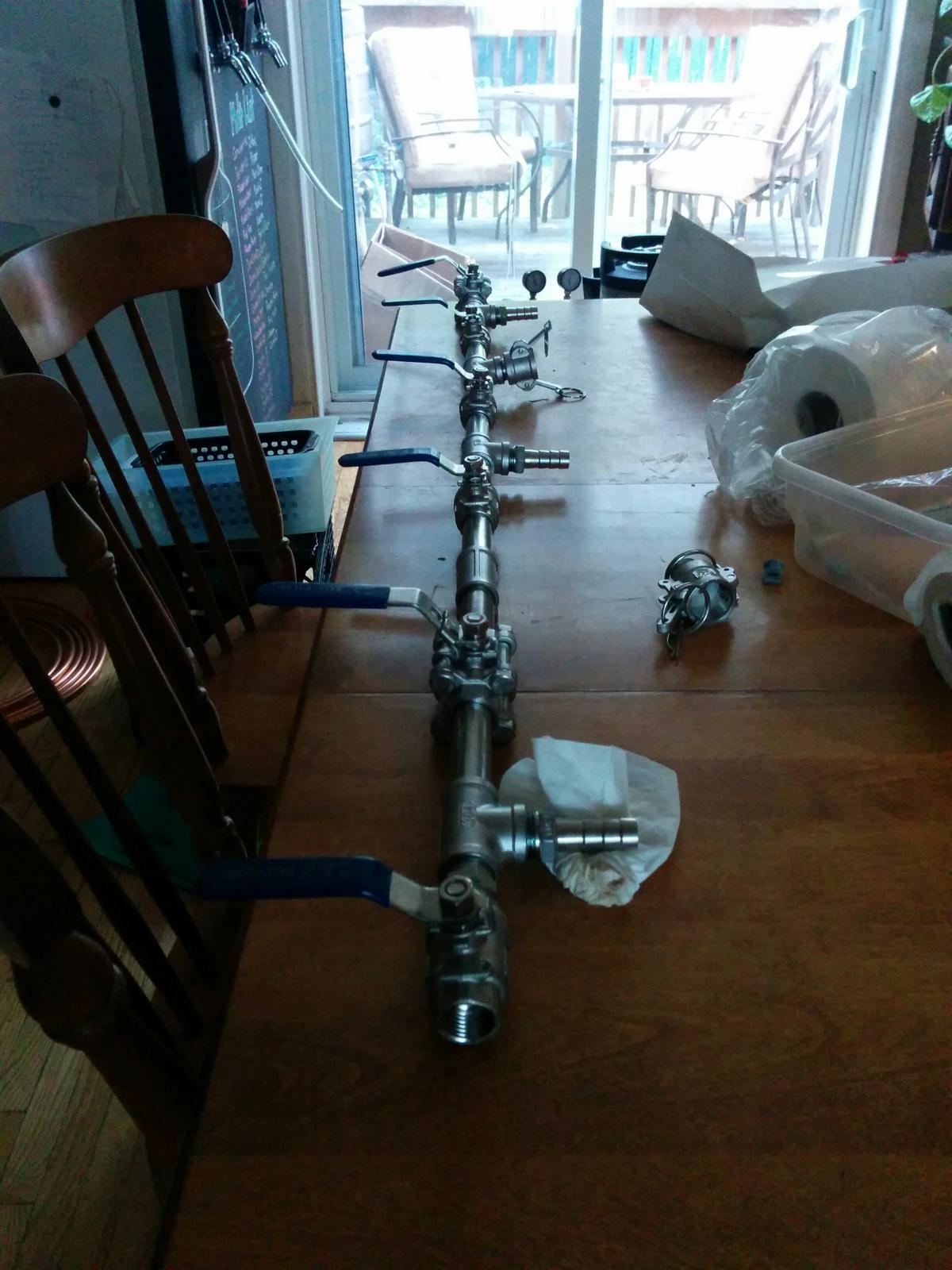Hey I have various 1/2" NPT parts in my rig. Some are 316SS, some 304SS, and with different manufacturers/quality. A few parts do not fittogether all that well. Also, I really want to line up all my valves, barbs, etc, and that seems impossible to do.
I'm thinking of using Loctite 2046 or RTV silicone to semi-permanently "glue" my parts together and seal them up.
Tips? The loctite stuff is anti-galling and rated food-safe. I'm also wondering if silicone glue could be used...though that seems like it would be a more permanent solution. Note: I've tried the whole "multiple rolls of plumber tape" thing. Even went as far as 10 turns of tape and STILL some won't seal nicely, and in any case my ball valves take so much torque to turn that I'm afraid standard use of the brewery will un-seal teflon tape.
I'm thinking of using Loctite 2046 or RTV silicone to semi-permanently "glue" my parts together and seal them up.
Tips? The loctite stuff is anti-galling and rated food-safe. I'm also wondering if silicone glue could be used...though that seems like it would be a more permanent solution. Note: I've tried the whole "multiple rolls of plumber tape" thing. Even went as far as 10 turns of tape and STILL some won't seal nicely, and in any case my ball valves take so much torque to turn that I'm afraid standard use of the brewery will un-seal teflon tape.


























![Craft A Brew - Safale BE-256 Yeast - Fermentis - Belgian Ale Dry Yeast - For Belgian & Strong Ales - Ingredients for Home Brewing - Beer Making Supplies - [3 Pack]](https://m.media-amazon.com/images/I/51bcKEwQmWL._SL500_.jpg)































